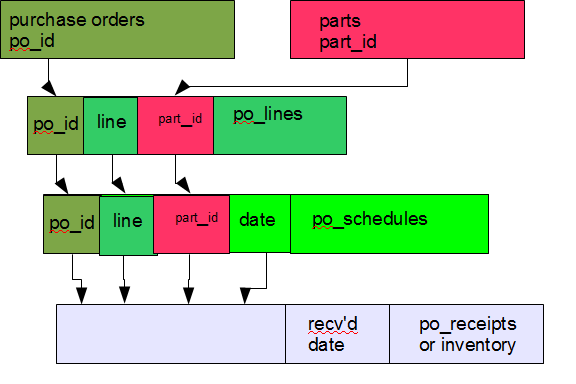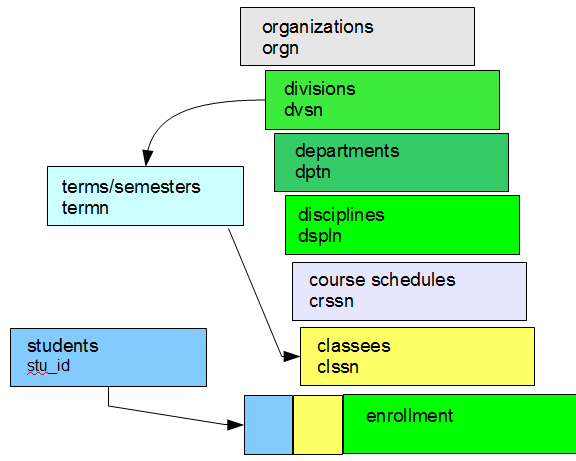|
PO Levels
In this example of a data levels, the keys increase as the levels move downward. (The example needs another date on the PO Receipts.) Even subsidiary records like po_receipts probably keeps the same keys, Simple set theory can resolve most questions about the data. |
Class Levels
In past decades, some people wanted to denormalize such deep levels. For example, within the table called classes, a large integer might represent the particular group of six keys from orgn thru clssn. With modern big disk drives, let the keys grow; with six levels, the composite key might be 30 to 50 bytes long. The key from each upper layer continues down to the lower record. Good tracking of keys makes for logical processing. Logging adds another level below the enrollment records. |

